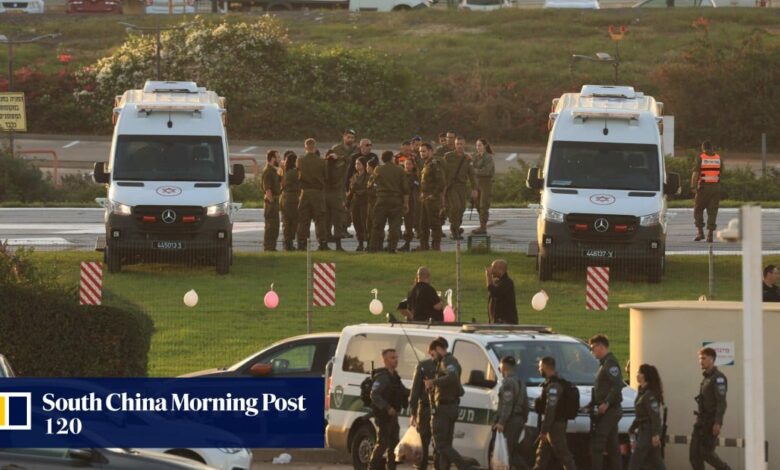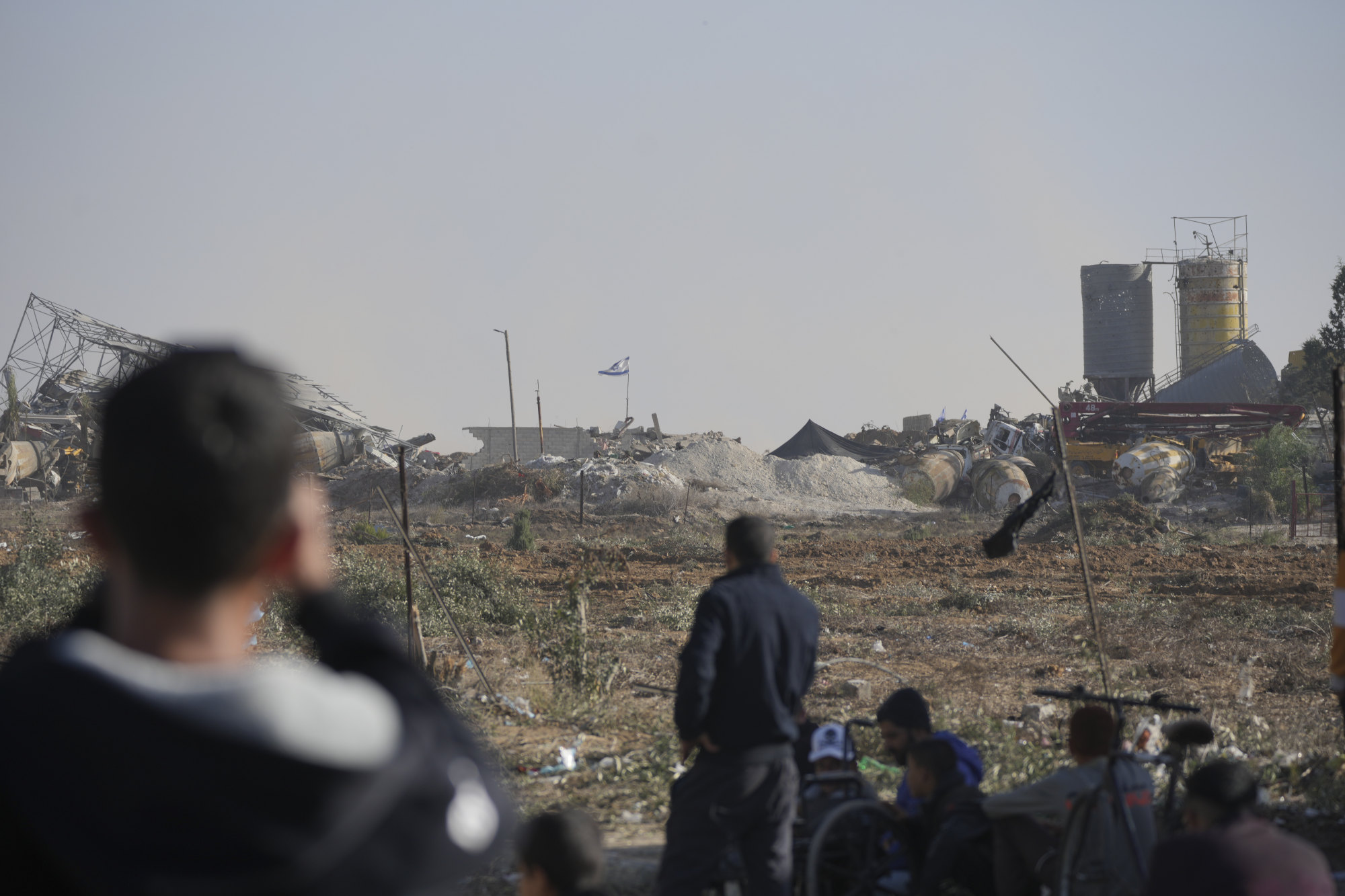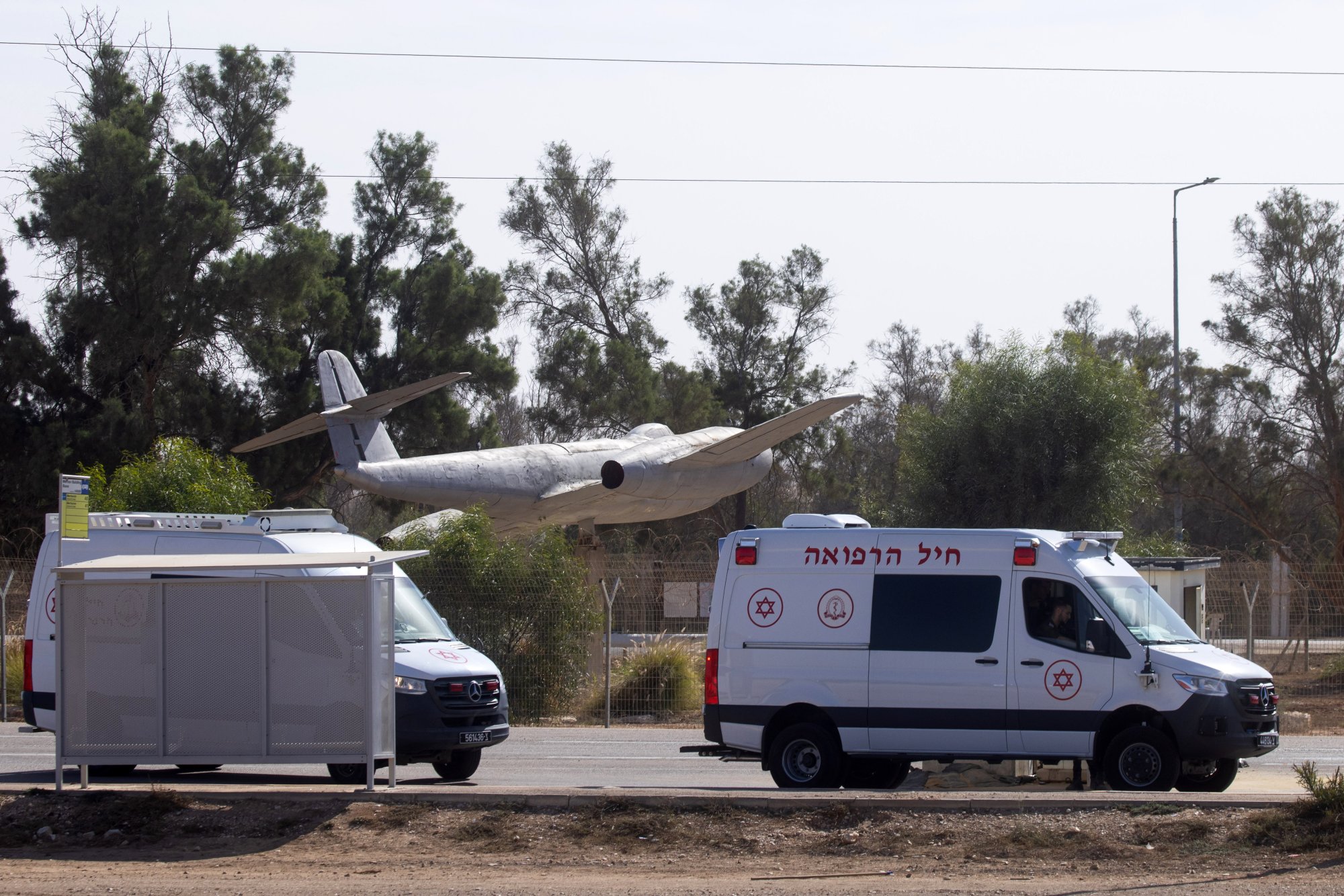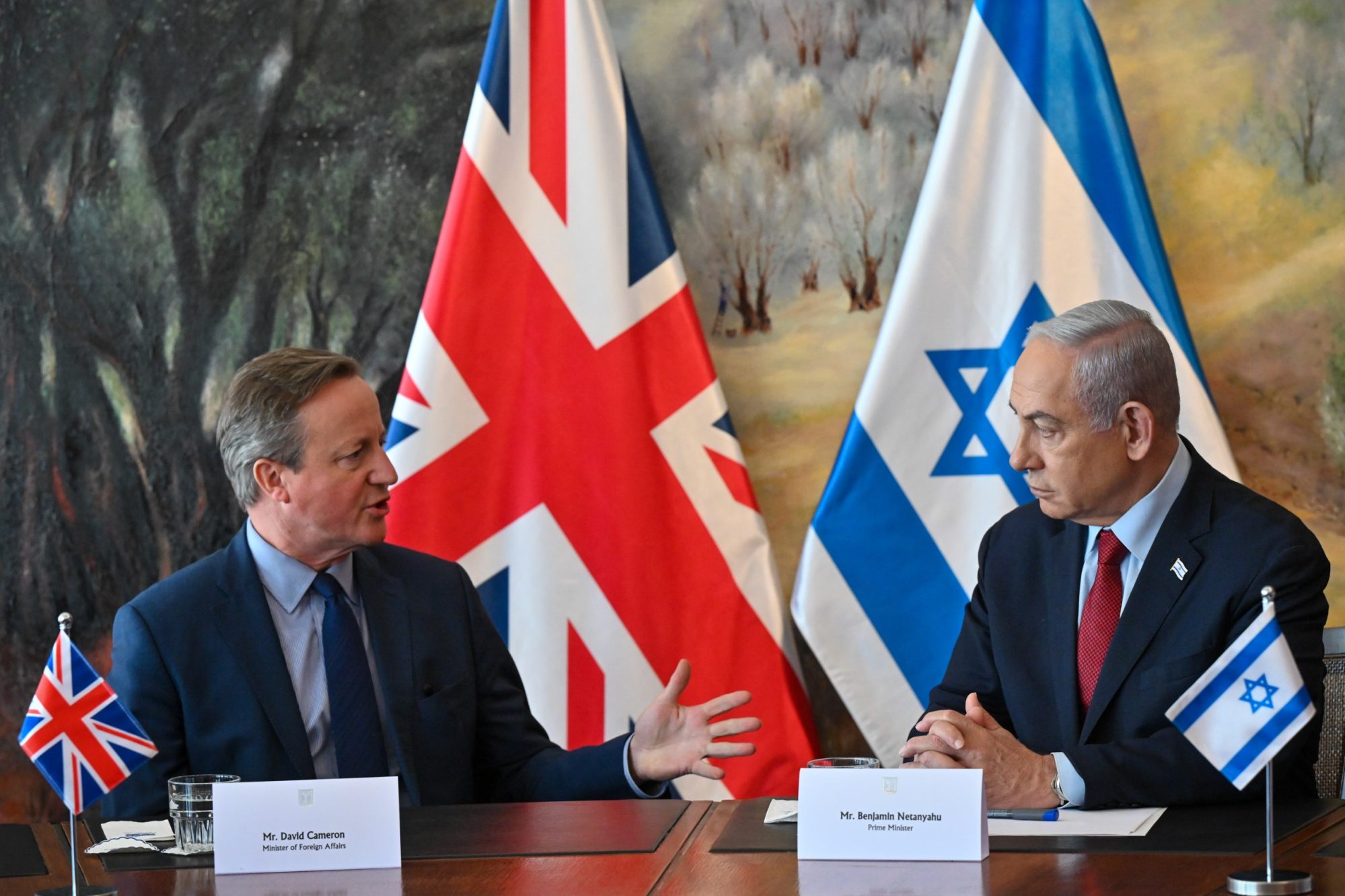12 Thais released in Gaza truce, says Thailand, Israel TV says some Israelis also freed

[ad_1]
Fighting raged on in the hours leading up to the truce, and both sides signalled the pause would be temporary.
Reuters journalists saw Israeli tanks moving away from the Gaza Strip at the northern end, and aid lorries rolling in from Egypt at the southern end. Before the war began last month, around 500 such trucks passed into the region daily.
There was no sound of Israeli air force activity above northern Gaza, nor the contrails typically left by Palestinian rocket fire.
In Khan Younis town in southern Gaza – where thousands of families displaced from the north have fled – streets filled with people venturing out of home and shelters as a cacophony of car horns and ambulance sirens replaced the sound of war.
“We are full of hope, optimism, and pride in our resistance. We are proud of our achievements, despite the pain this caused,” said resident Khaled Abu Anzah.
The pause in fighting triggered a mass movement of thousands of Gazans.
“I’m going home,” said Omar Jibrin, 16, after he emerged from a hospital in the south of the Gaza Strip where he and eight relatives had sought refuge.
The Israeli military has told Palestinians not to try to return to homes in the northern part of Gaza, which it described as a “dangerous war zone”.
The BBC said there were reports of Palestinians being shot at as they tried to move north.

The first hostages including elderly women were due to be freed at 4pm local time (10pm Hong Kong time), with the total number rising to 50 over the four days, Qatar’s foreign ministry spokesperson Majed Al-Ansari said in Doha.
At least 35 of those taken hostage were children, with 18 of them aged 10 or under at the time of the Hamas attack.
Israel would release 39 Palestinian prisoners – 24 women and 15 male teenagers – in the occupied West Bank in exchange for the 13 hostages due to be freed by Hamas on Friday, a Palestinian official said.
Israel’s Justice Ministry published a list of 300 prisoners eligible to be released, mainly teenagers detained over the past year for rock-throwing and other minor offences.
Ambulances arrived at Hatzerim military airbase in southern Israel on Friday, hours before hostages held by Hamas were expected to arrive after being released from captivity in Gaza.

Israeli officials said that after arriving at the airbase escorted by Israeli soldiers, the released hostages will be taken to five different hospitals across the country for medical treatment, as needed.
Egypt said 130,000 litres of diesel and four trucks of gas will be delivered daily to Gaza once the truce starts, and that 200 trucks of aid would enter Gaza daily.
Palestinians stuck in Egypt due to the war began returning to the territory on Friday, a Palestinian official said, after the temporary truce went into effect.
Under the terms of an agreement between the Egyptian authorities and the Palestinian embassy in Cairo, Palestinians stranded in al-Arish – a town near the border – had started to pass through the Rafah crossing to Gaza, said Kamal al-Khatib, the Palestinian embassy’s delegate at the crossing and head of the Palestinian community in the Sinai region.
In Singapore, a ‘highly unusual’ debate on the Israel-Gaza war emerges
In Singapore, a ‘highly unusual’ debate on the Israel-Gaza war emerges
There are 920 Palestinians stranded in al-Arish, he said.
Egyptian television al-Qahera News showed images of dozens of people carrying and pulling their bags as they entered Rafah, the only border crossing into the Gaza Strip that is not controlled by Israel.
Meanwhile, many people have been trying to get out of Gaza. Hundreds of foreigners and Palestinians with second passports have been able to leave the sealed-off strip via Rafah in recent weeks.
Israel cut off all imports at the start of the war, except for a trickle of food, water and medical supplies allowed in from Egypt. The lack of fuel has caused a territory-wide blackout, leaving homes and hospitals reliant on faltering generators.
For Gaza’s two million-plus residents, the deal spells a respite from relentless Israeli bombardments, which the strip’s Hamas government says have killed almost 15,000 people and displaced countless more.
The agreement raised hopes of eventually winding down the war, which has levelled vast swathes of Gaza, fuelled a surge of violence in the occupied West Bank and stirred fears of a wider conflagration across the Middle East.
Israel has pushed back against such speculation, though, saying it was determined to resume its massive offensive once the truce ends.
Israeli Defence Minister Yoav Gallant said on Friday that the truce was a “short pause”, after which Israel would resume operating with full military force.

Gallant was reported to have made the remarks to his Italian counterpart, who was on a visit to Tel Aviv.
“There will be a short pause and then we will continue operating with full military power. We will not stop until we achieve our goals: the destruction of Hamas and bringing home the hostages from Gaza to Israel – there are 240 hostages and it is something we cannot accept and cannot tolerate,” Gallant said.
For Hamas, the ceasefire will provide an opportunity to regroup after weeks of apparently heavy losses.
Abu Ubaida, spokesperson for Hamas’ armed wing, referred to “this temporary truce” in a video message that called for an “escalation of the confrontation with (Israel) on all resistance fronts”.

Palestinians in Gaza may be able to use the truce to look for children buried beneath the rubble or bury the dead, James Elder, a Unicef spokesman who arrived in Gaza on Thursday, told the BBC.
“There’s north of a 1,000 children that are probably buried under the rubble so perhaps the ceasefire will give people a chance to look for family members, perhaps it will give families a chance to bury the dead,” he said.
Agence France-Presse, Reuters, Associated Press, dpa
[ad_2]
Source link

